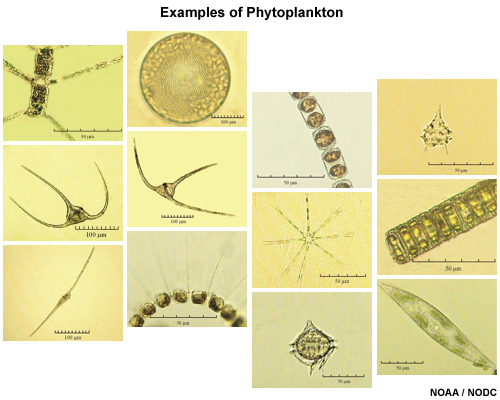Phytoplankton

In the Arctic ecosystem, phytoplankton consume carbon when they photosynthesize. Much of this carbon comes from the atmosphere.
Warming climate and elevated levels of CO2 will affect the growth of phytoplankton in polar oceans in many ways. Phytoplankton, in turn, consume carbon and thus affect the amount of CO2 in the atmosphere, which affects the climate. This is called a feedback.
In addition to being the base of the food web, phytoplankton are important recorders of past climate. If we understand the factors that affect their growth, ancient plankton from deep sea cores can tell us what the Earth's climate was like in the past and how fast it changed. Thus, having a better understanding of phytoplankton growth at present can help us understand past and future changes.
The knowledge we gain from studying the growth of phytoplankton is important in understanding how future warmer temperatures may affect their growth. This, in turn, will help us understand how these microscopic plants in the ocean affect the climate around the world. The fate of phytoplankton will influence most other organisms that depend on these microscopic plants as a food source.
